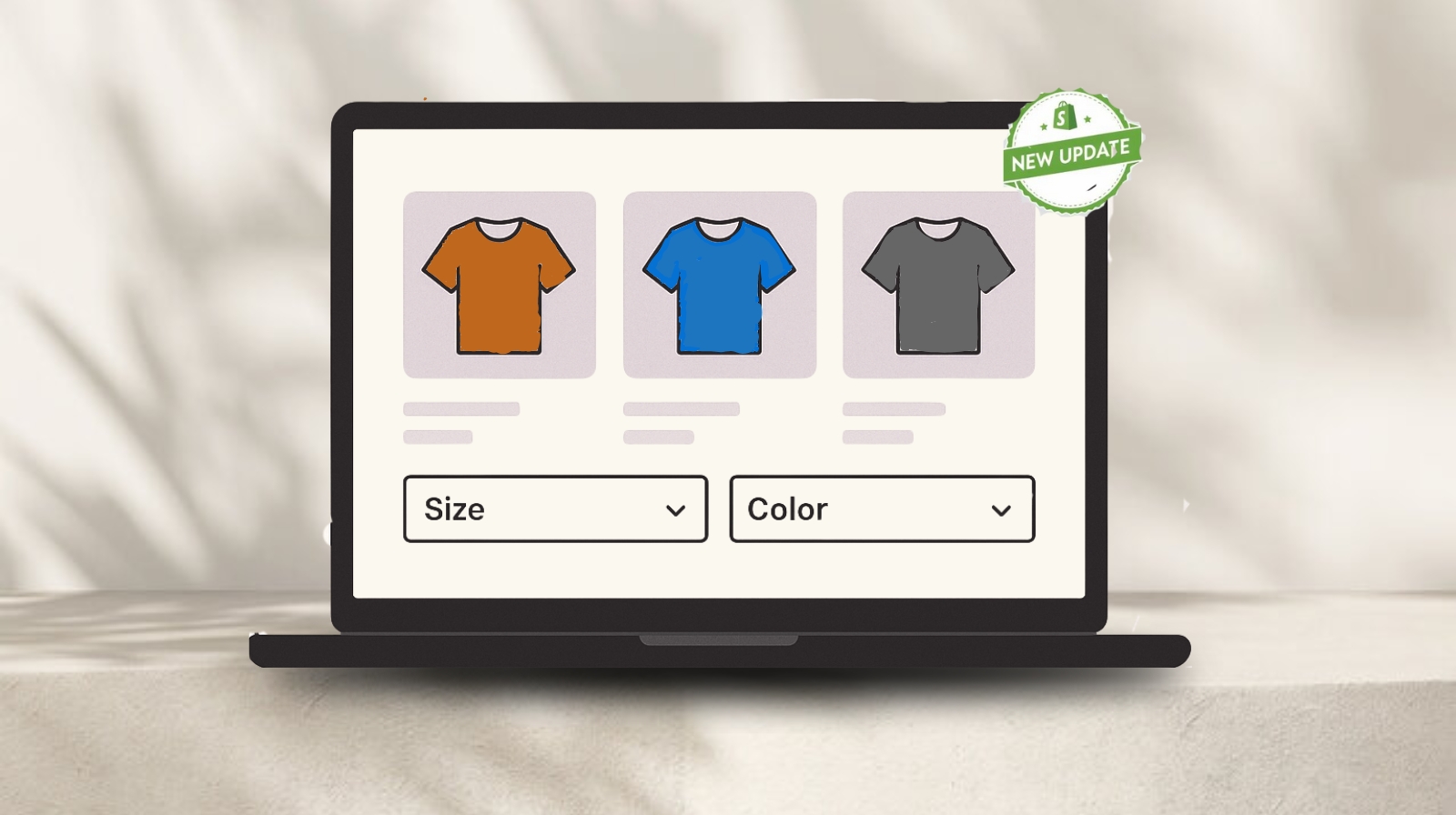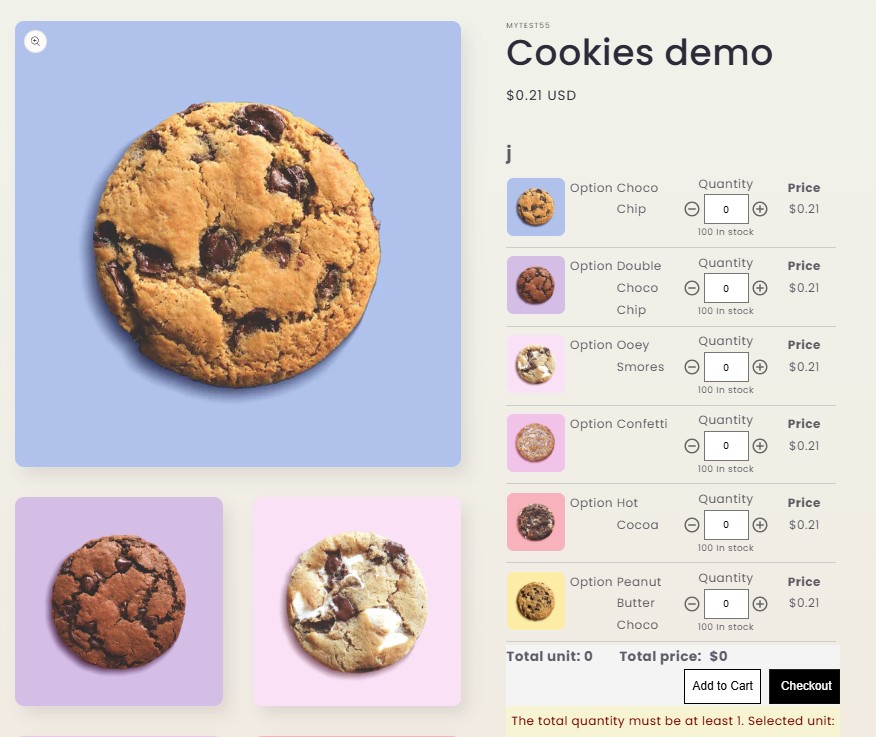
Shopify is moving fast. One of the most significant changes in 2025 is the Shopify catalog update.
For years, wholesale and B2B sellers have dealt with clunky catalogs. Small variant limits, messy bulk updates, and inaccurate stock made selling harder than it should be.
Now things are shifting. Shopify has added a stronger Catalog API and raised the variant cap from 100 to 2,048 per product. These updates sound technical, but they touch every part of your store—how products show up across marketplaces, how you handle large wholesale catalogs, and how future AI tools connect buyers with what you sell.
While Shopify has provided the foundation, merchants still need practical tools to manage real-world complexity. Let’s break it all down.
Table of Contents
What’s New in the Shopify Catalog Update?
So, what exactly is the Shopify catalog update?
At its core, Shopify has introduced a machine-readable, real-time product feed. It makes your entire store more accessible; not just to buyers, but also to AI-powered shopping tools. This comes through the new Catalog API, which delivers structured product data that’s always up to date.
Here’s what that includes:
- Product titles, descriptions, and taxonomy: Your products are now categorized in a way machines (and search engines) can easily understand. This improves product discoverability across channels.
- Live prices and inventory data: No more stale numbers. Shoppers and AI agents will always see the most accurate stock levels and pricing, which builds trust and avoids overselling.
- Variant-level details: Every size, color, material, or configuration is included. Instead of treating variants as hidden layers, they’re now fully visible and searchable in real time.
This upgrade is the foundation of Shopify’s Agentic Commerce strategy. The idea is simple: AI agents will soon do the shopping for customers. With clean catalog data, they can:
- Search across multiple Shopify stores at once
- Add products from different merchants into a single Universal Cart
- Complete checkout in one smooth, AI-driven flow
For merchants, this means your product data won’t just sit in your store anymore. It will actively fuel new AI-powered shopping experiences. The better your catalog is structured, the easier it is for Shopify’s ecosystem to push your products into global discovery channels.
In short, the Shopify catalog update turns your store’s backend into an AI-ready product feed. This ensures your business is prepared for the next wave of online shopping. Accuracy, speed, and discoverability will matter more than ever.
Why This Matters for Wholesale & B2B Merchants
If you sell wholesale or B2B, you already know how much precision matters. Buyers are ordering in bulk, often across multiple branches, and they expect every detail to be right. A single mistake—like showing stock that isn’t there—can quickly erode trust.
The Shopify catalog update addresses this by making your product data visible in real time. That means:
- Accurate stock levels. Buyers won’t waste time placing orders on SKUs that are already sold out.
- Tiered or negotiated pricing. Different pricing levels can be synced into the catalog, so large buyers see the correct discounts instantly.
- Company-location catalogs. You can tailor product access and pricing based on where a buyer’s branch is located.
In practice, this creates a smoother buying process. Wholesale customers want to move quickly, and now they can trust the information they see. For you, it reduces manual fixes, back-and-forth emails, and the risk of overselling.
Put simply, this update makes your wholesale catalog tighter, cleaner, and more reliable—exactly what B2B buyers need.
The 2,000 Variant Expansion: A Game-Changer for Complex Catalogs
Another major change tied to the catalog update is the Shopify 2000 variant expansion. Before, you could only have 100 variants under one product. Now, you can list up to 2,048. That’s a massive increase.
Here’s why this matters for merchants handling complex catalogs:
- Complex configurations. If your product comes in multiple sizes, colors, materials, and pack sizes, all those combinations can now fit under one product.
- Cleaner data management. Instead of breaking one product into several entries to handle more variants, you can keep everything in a single listing.
- Better customer experience. Buyers no longer have to jump between pages. Every option is visible in one place, which makes ordering faster and simpler.
That said, there’s still one limitation: Shopify only allows three options per product (for example: size, color, and material). Many B2B merchants need more flexibility, like pack size plus custom configurations. That’s where bulk order apps come in. You can showcase all your variants neatly under one product page. They help you apply advanced rules, create mix-and-match bundles, or build order packs that go beyond Shopify’s option cap.

So while the variant expansion is a huge leap forward, merchants selling complex B2B products will still need the right tools to fully unlock its benefits.
Variants as the Bridge Between Catalog API & B2B Growth
The real impact comes when you connect Shopify’s Catalog API with the new variant expansion. Both updates revolve around one thing: getting variant data right.
- AI discovery flows. When an AI agent searches for products, it needs precise metadata. For example: “blue, size M, 10-pack.” Without clean data, buyers may not find the exact variant they want.
- GraphQL bulk updates. Developers can now update thousands of variants at once, keeping catalogs consistent and accurate without hours of manual edits.
- Taxonomy and metadata. Proper classification ensures products show up in the right searches. Variants are no longer buried—they’re searchable and visible across AI-driven platforms.
For B2B merchants, this is more than a technical update. It’s the difference between staying hidden and being found in the next wave of AI-led commerce. Variants are no longer just a backend detail—they’re the bridge that connects your catalog to global discovery and scalable B2B growth.
What Developers Should Do Now
If you’re building or managing a Shopify store, the Shopify catalog update means you’ll need to adjust how you handle product data. The changes are big, but the steps are clear.
- Structure your product data. Make sure titles, descriptions, and variant attributes are clean and consistent. If your metadata is messy, AI tools won’t be able to read it correctly.
- Use GraphQL bulk updates. Shopify is moving toward GraphQL for large catalogs. Bulk updates let you edit thousands of variants at once, instead of wasting hours on manual work.
- Test the 2,000-variant limit. Try it in a development store. See how your themes, apps, and custom workflows handle the extra load. You don’t want to find issues after launch.
- Add Multivariants for control. Shopify’s base system still has limits—like the three-option cap. Multivariants helps you manage advanced rules, mix-and-match packs, and wholesale workflows that Shopify alone can’t handle.
The main takeaway: get ahead of the curve. If you prepare now, your store—or your client’s store—will be ready when AI-driven commerce becomes the norm.
Conclusion
The Shopify catalog update and the jump to 2,000 variants mark a big shift in how catalogs work. Stores are now faster, smarter, and built for AI shopping. For wholesale and B2B merchants, that translates into more trust, smoother ordering, and fewer limits holding you back.
But new infrastructure doesn’t solve everything. Managing thousands of variants, creating bundles, and running wholesale pricing at scale still takes the right tools. That’s where Multivariants comes in. It bridges the gap between Shopify’s base features and the real-world needs of complex B2B stores.
The future of online selling will be powered by clean data and AI-driven discovery. Preparing now ensures your products aren’t just sitting in your store; they’re out there, visible, and ready to be found.
FAQs About the Shopify Catalog Update
What is the Shopify catalog update?
The Shopify catalog update is a major change that introduces a real-time Catalog API. It makes product and variant data machine-readable, powering AI-driven shopping and Universal Cart checkout.
How does this update help wholesale stores?
Wholesale merchants benefit from accurate inventory, real-time pricing, and company-location catalogs. These updates ensure bulk orders and negotiated rates are reflected properly.
Does the 2,000 variant update remove Shopify’s 3-option limit?
No. Products are still limited to three options (like size, color, and material).
